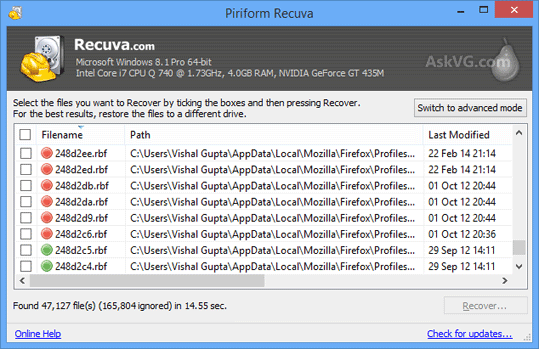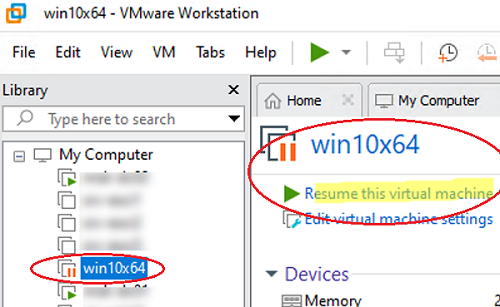New Reasons To Picking A Free Software Keygen
Wiki Article
What Are Adobe Media Encoder Versions And How Do Cs6 Compare To 2015, 2020, And 2022? How Do I Get Free?
Adobe Media Encoder can be used to export media files from Adobe Premiere Pro as well as After Effects. Adobe Media Encoder can be utilized with Adobe Premiere Pro, After Effects or as a standalone program.
Adobe Media Encoder CS6 : This version, which was released in 2012, was part of Adobe Creative Suite 6. This version introduced several new features, like support for GPU-accelerated encryption and exporting to a variety of formats, and enhanced performance.
Adobe Media Encoder 2015: This version came out in 2015 and included a variety of new features like support for HDR as well as the ability export in new formats like GIF and WebM and enhancements in the user interface as well as performance.
Adobe Media Encoder 2020: The version came out in 2019 and brought a variety of new features such as the support of ProRes RAW and HDR in HDVC, the possibility to export to new formats like H.264 adaptive bitrate streaming as well as improved stability and performance.
Adobe Media Encoder 2022: The release of this version came in 2021 and brought in a number of new features, including support for more HDR formats, the possibility to export in higher resolutions, new presets for social media platforms and improved performance and stability.
Adobe Media Encoder continuously improves and adds new features. These updates made it easier for users export media files in a broad range of formats that are compatible with various operating systems and gadgets. View the most popular https://invalidsoftware.net/ for website tips.

What Is Adobe Xd 2019 And What Are The Differences Between It, Cc2018 And Versions 2022? How Do I Get Free?
Adobe XD's user experience (UX design) tool is used to create wireframes and prototypes for websites, mobile applications and digital interfaces. Adobe XD is a tool that lets designers design and test interactive prototyping rapidly and easily.
Adobe XD CC: This is the first version to be released by Adobe XD in 2017. It introduced the core functionality of the software, such as creating artboards, prototypes and wireframes.
Adobe XD 2019, released in the year 2018 has a variety of new features like the capability to create with voice and video. It also has auto-animation and responsive resizing. It also integrates with Adobe's other products like Photoshop as well as Illustrator.
Adobe XD 2022: This version came out in 2021 and introduced several new features, including support for 3D transforms, better performance, as well as the ability to build design systems using linked assets. The version also introduced integration with other collaboration tools such as Jira and Miro.
Adobe XD CC 2018, a version released by Adobe in 2018 as a component of Creative Cloud. It comes with all the features available in Adobe XD 2018, but includes additional features like cloud-based documents sharing libraries, as well as integration with other Creative Cloud applications.
Adobe XD's new versions have introduced new features, that allow designers to create intricate and interactive designs. They also allow for more integration with Adobe products, and improved performance. These updates made it easier for designers to design and test prototypes swiftly and efficiently, resulting in more enjoyable user experiences with digital products. View the best https://invalidsoftware.net/ for website tips.

What Is Recuva Pro? How Do The Versions Differ? How Do I Get Free?
Recuva Pro, developed by Piriform (a affiliate of Avast), is a data recovery. It allows you to retrieve deleted folders and files from a variety of storage media such as USB drives, memory cards hard drives, and other. Recuva Pro can be purchased in various versions. Each version comes with its own features and price.
Recuva Pro comes with a free version. It has the ability to retrieve deleted documents from all types of storage media. The free version has fewer options than the paid versions.
Professional version: This edition comes with added features such as deep scan that can retrieve files even from damaged or deleted drives. The version also comes with priority customer support and automatic updates.
Professional Plus version: This version has all features of the Professional version as well as secure deletion that allows users to permanently erase folders and files on their devices.
The various versions of Recuva Pro offer varying levels of features and capabilities including the free version having the least features as well as the Professional Plus version being the most advanced. The user should select the version that best suits their budget and needs. See the top rated https://invalidsoftware.net/ for site info.

What Are Vmware Workstations? What Are The Differences Between Them? How Do I Get Free?
VMware Workstation is virtualization software which allows users the ability to run virtual machines in a single physical device. VMware Workstation comes in several versions that vary in the features and compatibility. Here's a brief overview.
VMware Workstation 6.5: This was launched in 2008 and was the first version to be able to run Windows Vista and 64-bit operating systems.
VMware Workstation 8: This version was released in the year 2011 and added new features like the capability to upload VMs to vSphere Multi-touch support as well as support for USB 3.0.
VMware Workstation 10: This version was released in 2013 and introduced support for Windows 8.1 and new virtual hardware features, such as SSD pass-through and Intel Haswell CPU performance optimizations.
VMware Workstation 11 The version that was released in 2014, added support for Windows 10 as well new virtual hardware functions, such as DirectX 10 and DirectX 10 compatibility.
VMware Workstation 14 The version was released in the year 2017 and brought support for the latest versions of Windows and Linux operating systems, in addition to support for new technologies such as UEFI Secure Boot.
VMware Workstation 16 came out in the year 2020. It supports the latest versions of Windows 10 and Ubuntu as in addition to new hardware features like virtual Trusted Platform module (TPM) or Virtual NVMe devices.
Each version of VMware Workstation also comes in various editions, like the Pro and Player editions, which offer distinct sets of capabilities and features. The Pro Edition, for instance is designed for professionals and has more advanced functions such as the ability to copy. Remote connections and integration with vSphere and vSphere, among others. The Player Edition however is designed for use by individuals. It offers a simplified interface with fewer options. Follow the best https://invalidsoftware.net/ for website tips.

What Exactly Is Xrmtoolbox? And What Is The Difference Between Its Versions? How Do I Get Free?
XrmToolBox (Open-Source) is a tool that manages Dynamics 365 and Power Platform environments. It offers various tools and utilities for tasks like adjustments, data management as well as debugging and integration with other systems. The various versions of XrmToolBox differ in capabilities, compatibility, and bugs fixed. XrmToolBox comes in several noteworthy versions. XrmToolBox 1x: This tool provided a base set of features, including solutions import and export. It also included the registration of plugins and workflow management. It was compatible with Dynamics CRM 2011, 2013, and 2015.
XrmToolBox 2.0 Version 2.0 included new tools and enhanced functionality, such as the metadata browser, view and form editor and an attribute manager. It was compatible Dynamics CRM 2016 and Dynamics 365.
XrmToolBox 3: This edition includes a redesigned user interface, aswell with new tools like the web resource manager and the code editor. It was compatible with Dynamics 365 as well as Power Apps.
XrmToolBox v4.x: The major focus of this release was to improve performance and stabilty. It also added new features, like the dependency checker as well as the attribute usage inspection. It was compatible with Dynamics 365 Power Apps.
XrmToolBox 5.0 Version 5.0 introduced new features, including the model-driven designer of apps as well as the portal profiler. Additionally, it included bug fixes and improvements in the interface and the performance. It was compatible with Dynamics 365 Power Apps.
XrmToolBox 6.x: This version focused on enhancing the user experience overall through the introduction of new user interfaces along with new tools, as well as enhancements to performance. The latest versions of Dynamics 365 and Power Apps.